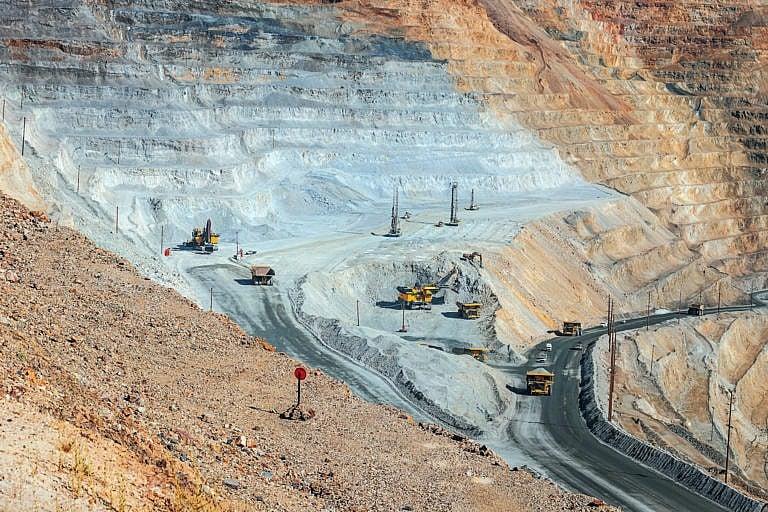The EV battery gold rush is here. Here’s how Canada can access its untapped resources.
“If Canada can find a way to sustainably mine and supply metals to EV manufacturing hubs in North America, the country will be spinning green gold”

(Photo by iStock)
Share

Canada’s EV sector is booming. In 2022, GM Canada opened the country’s first full-scale EV manufacturing plant in Ingersoll, Ontario. The federal government is offering billions of dollars in subsidies to Volkswagen and Stellantis to build EV battery plants in the province. More than 86,000 EVs were registered in Canada in 2021, compared to around 19,000 in 2017. Battery charging infrastructure is improving rapidly too: Telus and the Australian EV company Jolt announced plans to build 5,000 charging stations in five years across Canada.
If we can find a way to sustainably mine and supply metals to EV manufacturing hubs in North America, Canada will be spinning green gold. Though battery chemistry is evolving, a typical lithium-ion EV battery contains roughly 65 per cent nickel and 20 per cent cobalt. Copper is another essential metal used throughout a car’s wiring and its motors. Canada produces all these metals, and we have undeveloped reserves of more.
This isn’t new terrain: over the last century, we became a leader in mining—Canada is the world’s third-largest producer of palladium, the fourth-largest producer of gold and the sixth-largest producer of nickel. We’ve developed a stringent environmental assessment process for new mining projects and have a highly skilled and increasingly Indigenous-led mining service sector and workforce.
But there’s a catch. Most of the underdeveloped mineral deposits required to fuel this transition lie in the far North, stranded by a lack of infrastructure. Ontario’s Ring of Fire, a 5,000-square-kilometre crescent of volcanic rock located on Treaty 9 territory in the James Bay Lowlands, is one of these untapped resources. It houses an estimated $90 billion worth of chromium, gold, platinum, zinc and—essential to electric vehicles—copper and nickel. But these metals remain worthless until the province builds a permanent road to take them to market. Without a road in place, we can’t transport the metals we’ve mined to manufacturing hubs in the south. So even if we were to start mining in the Ring of Fire, the metals for EV vehicle batteries would be stuck there.
RELATED: I took my EV out on a 15,000-kilometre transcontinental road trip. Here’s why I’d do it again.
We’ve made progress since the first nickel-copper discovery in the Ring of Fire 16 years ago. Several environmental assessments are underway to determine if a $2-billion road running north from the existing highway system to the Ring of Fire is feasible, and the provincial government has pledged $1 billion to build 450 kilometres of the all-season conduit. The road’s proponents are the First Nations of Webequie and Marten Falls: two communities among the closest to the metal deposits that would both have permanent road access for the first time, starting in 2027. Ten other First Nations in the Treaty 9 area are less enthusiastic—they’re launching a $95-billion lawsuit against the federal and provincial governments for not consulting them on development plans.
With a road in place, the Ring of Fire (and other stranded deposits) could become sustainable and green sources of minerals critical to EV manufacturing. Several practices can help make that process environmentally secure. First off, wind power could provide enough energy to replace diesel fuel typically used in mines—this is already happening at the Raglan nickel mine on the other side of James Bay in Quebec. Better yet, battery-powered vehicles, instead of diesel engines, could fuel the underground mining fleet.
Mine tailings, a mining byproduct that can become hazardous when exposed to the elements, can be mixed with cement and repurposed in underground mines instead of released into ponds. This is happening at the Brucejack gold mine in northern B.C. And instead of dumping barren waste rock at the surface, we could use it to fill in mined-out areas—an increasingly common industry practice. Real-time monitoring could detect subtle changes in water and air quality, or even approaching wildlife. The award-winning caribou protection plan at the Back River gold district in Nunavut, for example, stops trucks in their tracks when wildlife approaches. The monitoring would mitigate any accidental releases of contaminants into the surrounding environment and protect migrating species. The province could also restrict mining to the underground in order to limit surface disturbance and ensure a smaller environmental footprint. Eagle’s Nest, the first underground nickel-copper mine to be developed in the Ring of Fire, for instance, would have a surface footprint of just one square kilometre (including the processing plant).
To ensure First Nations are heard during the development process, they could become equity partners in the Ring of Fire—the Tahltan, for example, have invested in B.C.’s Eskay Creek gold and silver mine development in order to have some sway in decision making. And a share of the mine revenue could be directed to the area’s impoverished First Nations communities—the Tahltan First Nation collects $7 million annually in mineral tax revenue from the Brucejack gold mine to enhance community infrastructure and services.
Surplus cash generated by the Ring of Fire could be invested into a sovereign wealth fund, as Norway has done with its profits from oil and gas extraction. The fund would be a growing pool of money safeguarded by the province or country that could be used to flatten the roller-coaster of boom-bust cycles, creating a stabler economy for future generations of northerners.
These practices can drastically offset the environmental and social impact of developing stranded deposits such as the Ring of Fire. We have the metals in the ground and the investment in both EV battery and car manufacturing—we just need to figure out how to tie these two ends together in a sustainable way.
Virginia Heffernan is principal of GeoPen Communications and author of Ring of Fire: High Stakes Mining in a Lowlands Wilderness.